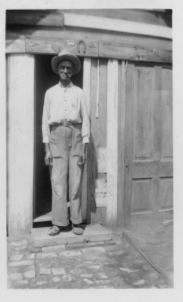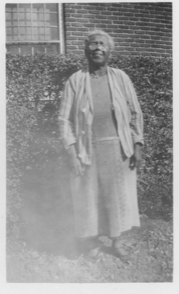Book of The Month: The Slave Narratives
- Khalei London Suol
- Feb 21, 2021
- 4 min read
Updated: Nov 18, 2022
Author: Khalei Suol
A Culture Centered Look into the Lives of Formerly Enslaved African Americans.

“Tisn't he who has stood and looked on, that can tell you what slavery is -- 'tis he who endured.” John Little, 1855, Former En-Slaved African American
It is common for Americans to learn the historical aspects of slavery from one standpoint - the oppressor. Through this book, an individual can gain a more well rounded look into the lives of enslaved African Americans, their views on love, politics, newly found freedom, religion, life, and future hopes.
Understanding The Purpose
The South Carolina Slave Narratives is a collection of interviews held after the “abolition” of slavery. These interviews were conducted by the Federal Writers Project (FWP) as a means to further gauge and understand the stories and lives of newly freed African Americans (AA). From 1936 to 1938 a total of 2,300 interviews were conducted spanning 17 different states. These states include Alabama, Arkansas, Florida, Georgia, Indiana, Kansas, Kentucky, Maryland, Mississippi, Missouri, North Carolina, Ohio, Oklahoma, South Carolina, Tennessee, Texas, and Virginia. Thus, through the diversity of these interviews the reader can specifically target one state or read the series in it's entirety.
The Library Of Congress details that these narratives are firsthand accounts of the lived life experiences of African Americans, however, before these stories were published they were edited and arranged so that the reader could better understand. In 1941, these accounts of AA life were later compiled, via microfilm, in a collection titled Slave Narratives: A Folk History of Slavery in the United States from Interviews with Former Slaves. Later, in 2000-2001, all of the material from the FWP regarding the Slave Narratives would be rescanned and made available to the public; this includes 500 photographs taken by interviewers -200 of which had never been seen by the public.
From Generation to Generation : A Gallery of Photographs from the Slave Narratives Project
“But I think the Younger Generation of negroes is different from what they used to be. They go where they want and do what they want to and don't pay much attention to old folks anymore” -Frances Andrews (83), Newberry S.C., 8/11/1937
The photographs in this collection include pictures of local landmarks, receipts detailing the purchase of enslaved African Americans, as well as photographs of African Americans around their local area. The entire collection can be seen HERE.

I wasn’t sure what to expect when I began reading. What exactly would a former enslaved African American say to a White interviewer that wouldn’t get them killed? How accurate could these stories be if the interviewee felt their life was threatened if they chose to speak freely? Still, I read.
While turning pages I found myself immersed in stories you won’t find in a textbook, stories untold in academia at any level. Stories of black love, family structure, community, religion, spirituality, and self-discovery. Samuel Boulware, an 82-year-old former en-slaved person, stated “My daddy was a slave on Reuben Boulware’s plantation, ‘bout two miles from Marster Hunter’s place. He would git a pass to come to see mammy once every week. If he could come more than dat he would have to skedaddle through de woods and fields from de patrollers. If they ketched him widout a pass, he was sho’ in for a skin crackin’ whippin’. He knowed all dat but he would slip to see mammy anyhow, whippin’ or not.” This short snippet from a more in-depth interview resonated with me. Why?... Imagine being in love with someone enough to risk the skin on your back -literally. This is why passion runs so high in the African American community, it is imbedded in our culture.
Within these stories America’s barbaric actions against the African American population are further solidified. A former enslaved AA woman known only as Mom Hager (age unrecorded) said the following about the KKK, “Klu Klux… Reckon that the way the old timey people call ‘em. Have to run away, you go to church. Going to come in to ketch you or do any mischievous thing – come carry you place they going to beat you – in suit of white.”. Later, she went on to detail the whipping of her sister, “Ma say some dem plan to run away. Say, ‘Less run! Less run! Master ketch dem and fetch dem in. Lay ‘em cross barrel. Beat dem till they wash in blood. Fetch ‘em back. Place ‘em cross the barrel – hogsket barrel – Christ! The ramp wash in blood. Beat my sister.”
I find that the defining trait of those interviewed in the Slave Narratives of South Carolina is directly related to the spirit found in the African American community -resilience. The determination to live a normal life despite the brutalities of their oppressors. The resilience to find love and be loved, to create families, to start businesses, to own property, and to live without fear.
With the current race-based hate in the United States I elected to minimize the amount of research I was conducting regarding the atrocities of slavery and racist white America. As a black man, I don’t need a reminder of the slaughtering of my people nor its effect on their mental health. Consequently, it took me 6 months to finish this book. It is imperative to understand how AA history is embedded in the foundation of American history. Further, for AA, it is essential to recognize the struggles faced by our enslaved ancestors. For myself, it is through identifying these struggles that a sharper view of the world around me was created. Which has allowed me to become more present, self-aware, levelheaded, and resolute.
The Slave Narratives commissioned by the Library Of Congress is a conversation starter for any household. For America its history. For African Americans it’s a reminder that we are products of our ancestors resilient, brave, and unmoving.
This entire series is available at your local bookseller, although you won’t walk out with it the same day. These narratives are printed to order and mailed at the book sellers request to you.
Check The Sources
Durant, A. (1936). Federal Writers Project: Slave Narrative Project, Vol.14, South Carolina, Part 1. Library Of Congress, https://www.loc.gov/item/mesn141/.
Library Of Congress. (1936-1938). Federal Writers Project: Born into Slavery. Digital Collection. Library Of Congress, https://www.loc.gov/collections/slave-narratives-from-the-federal-writers-project-1936-to-1938/.


























Comments